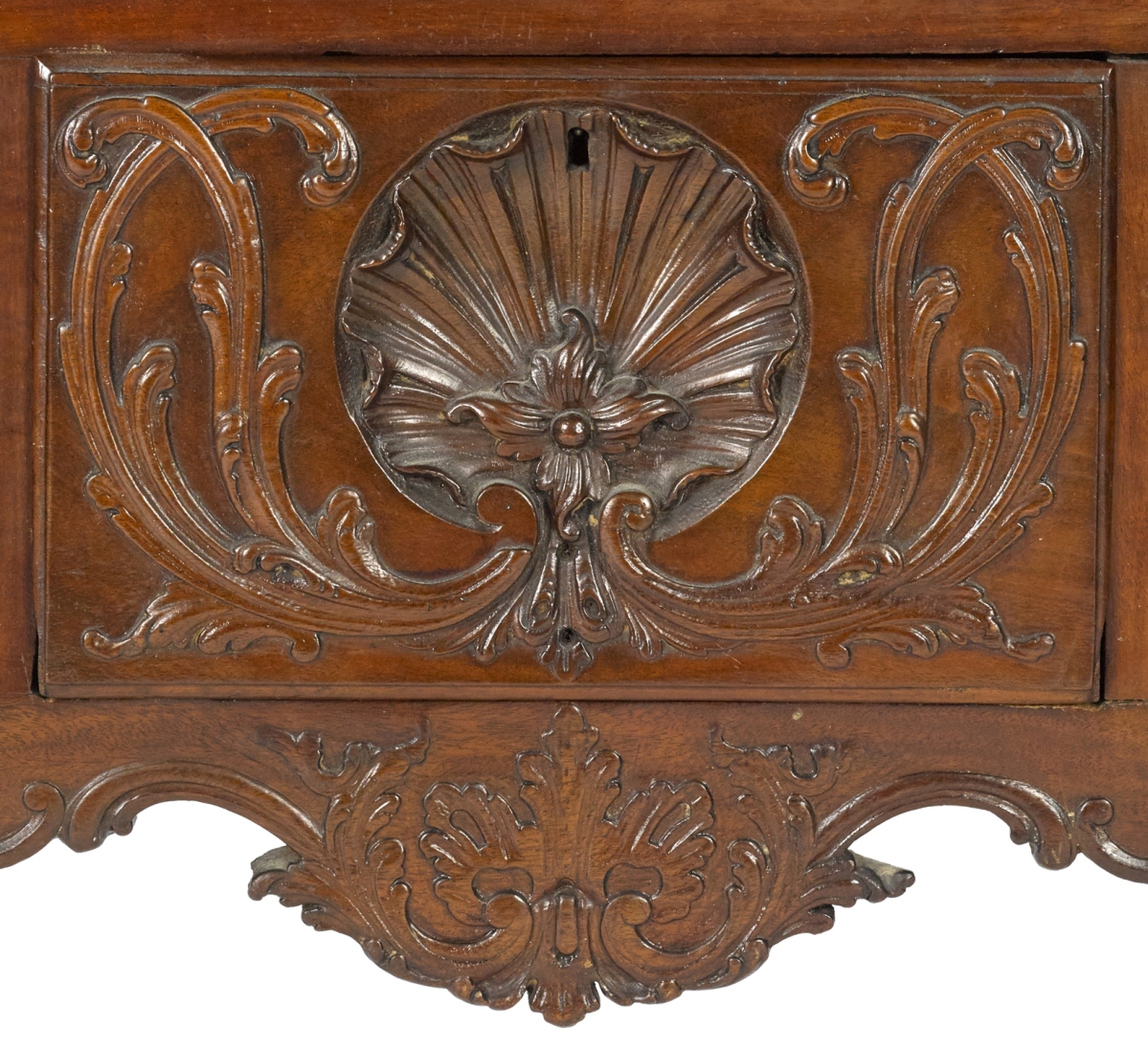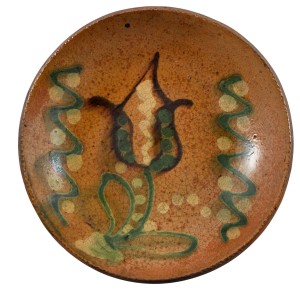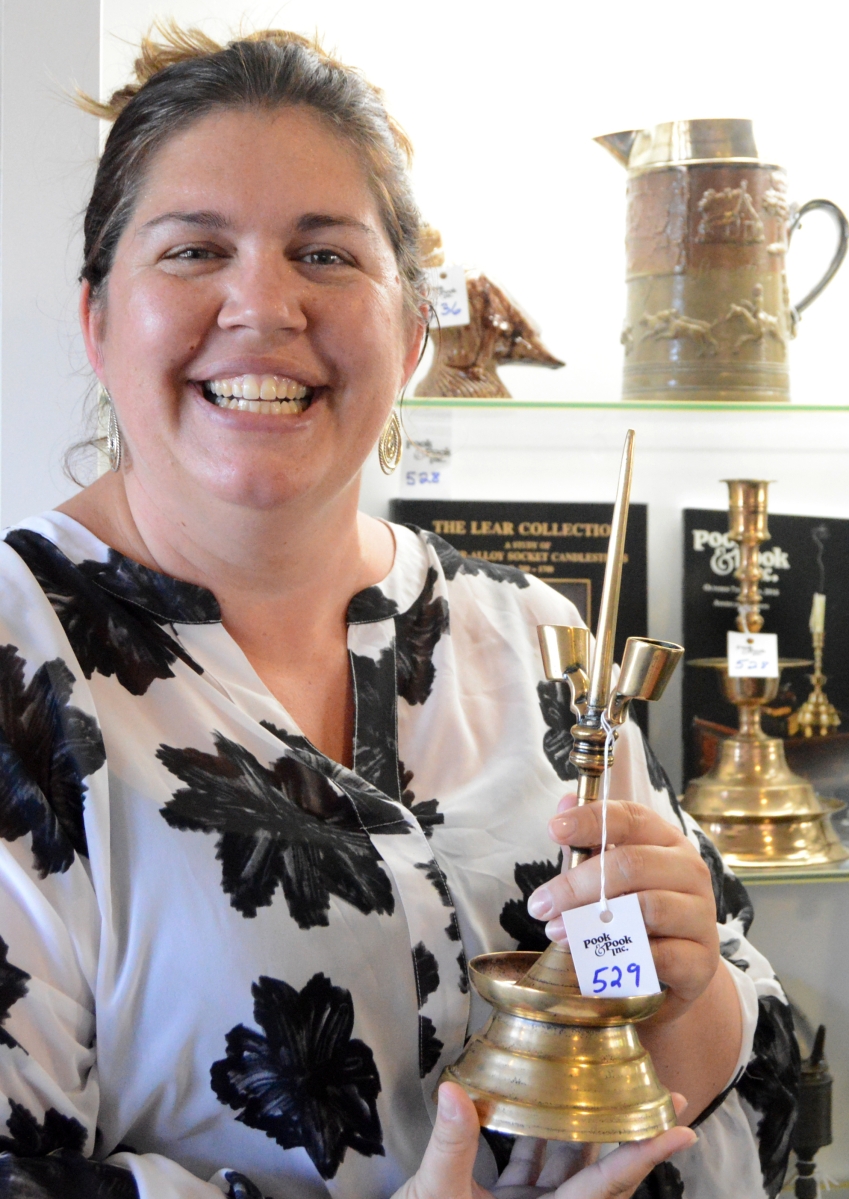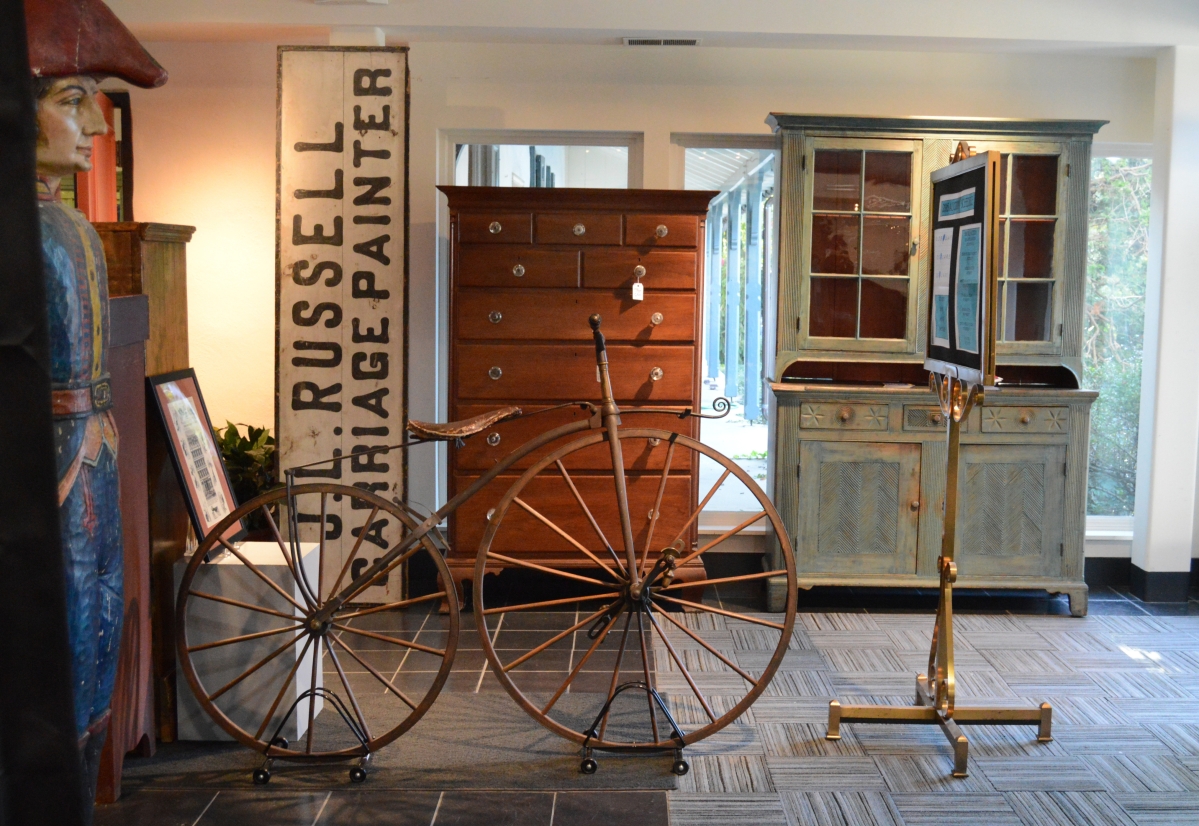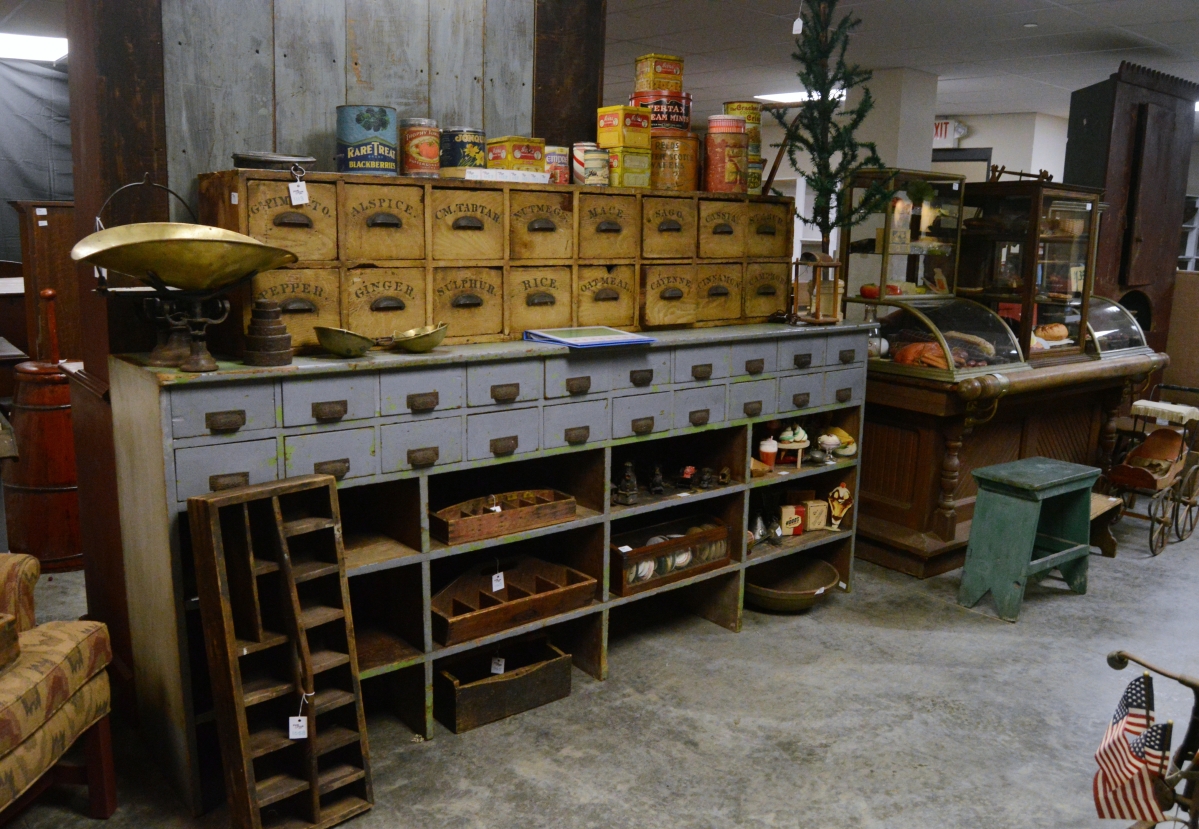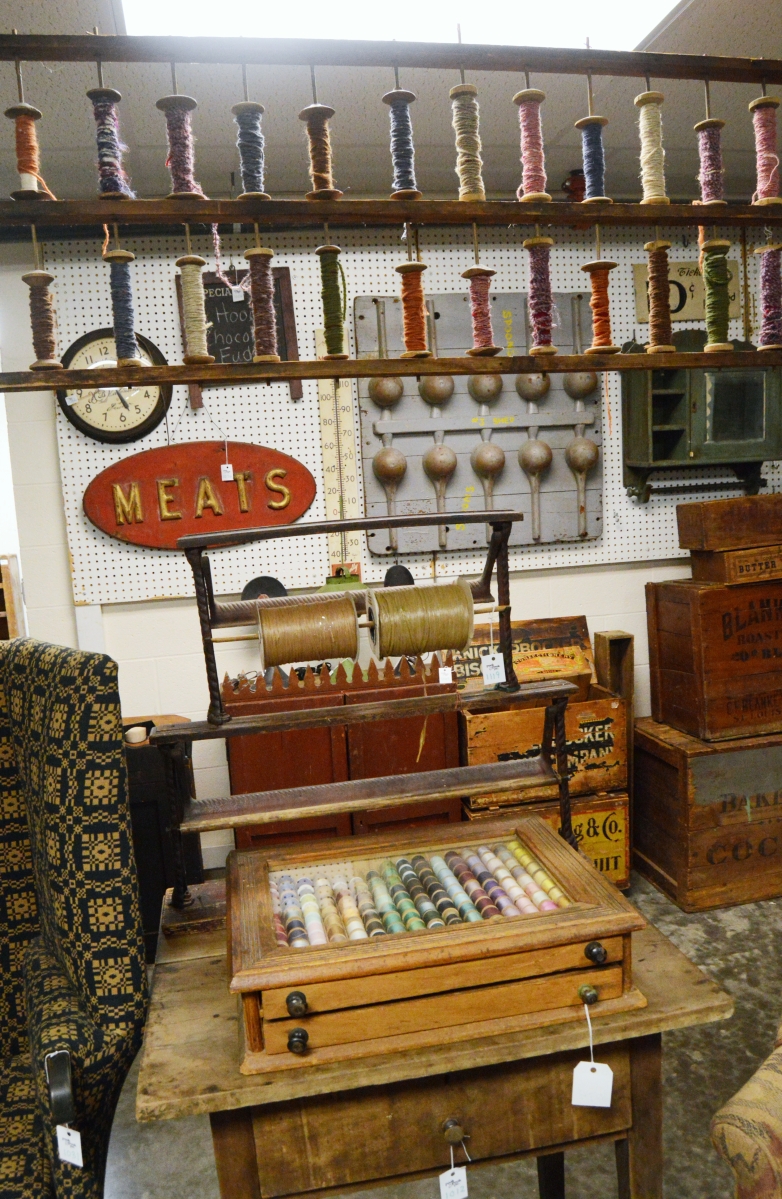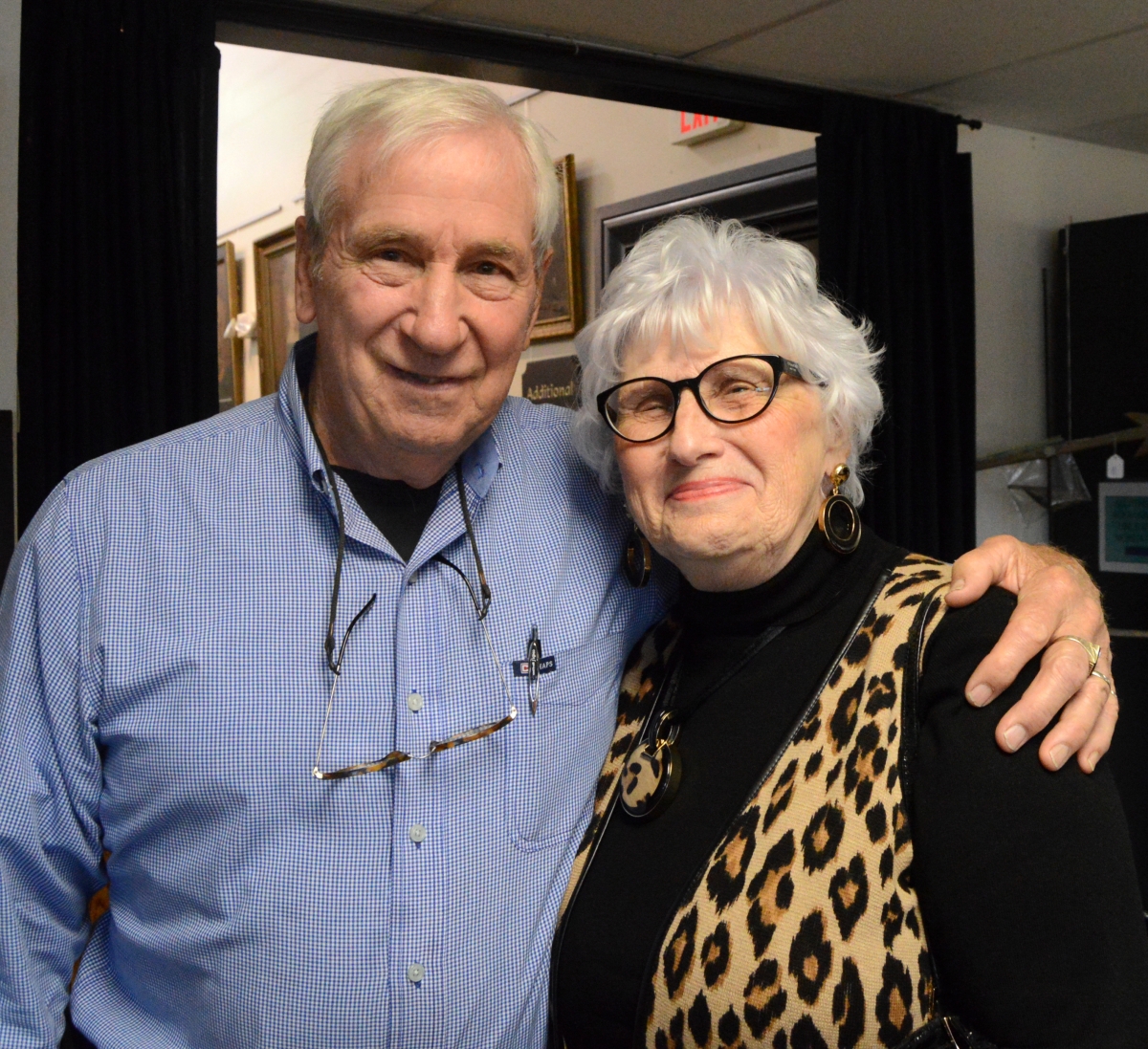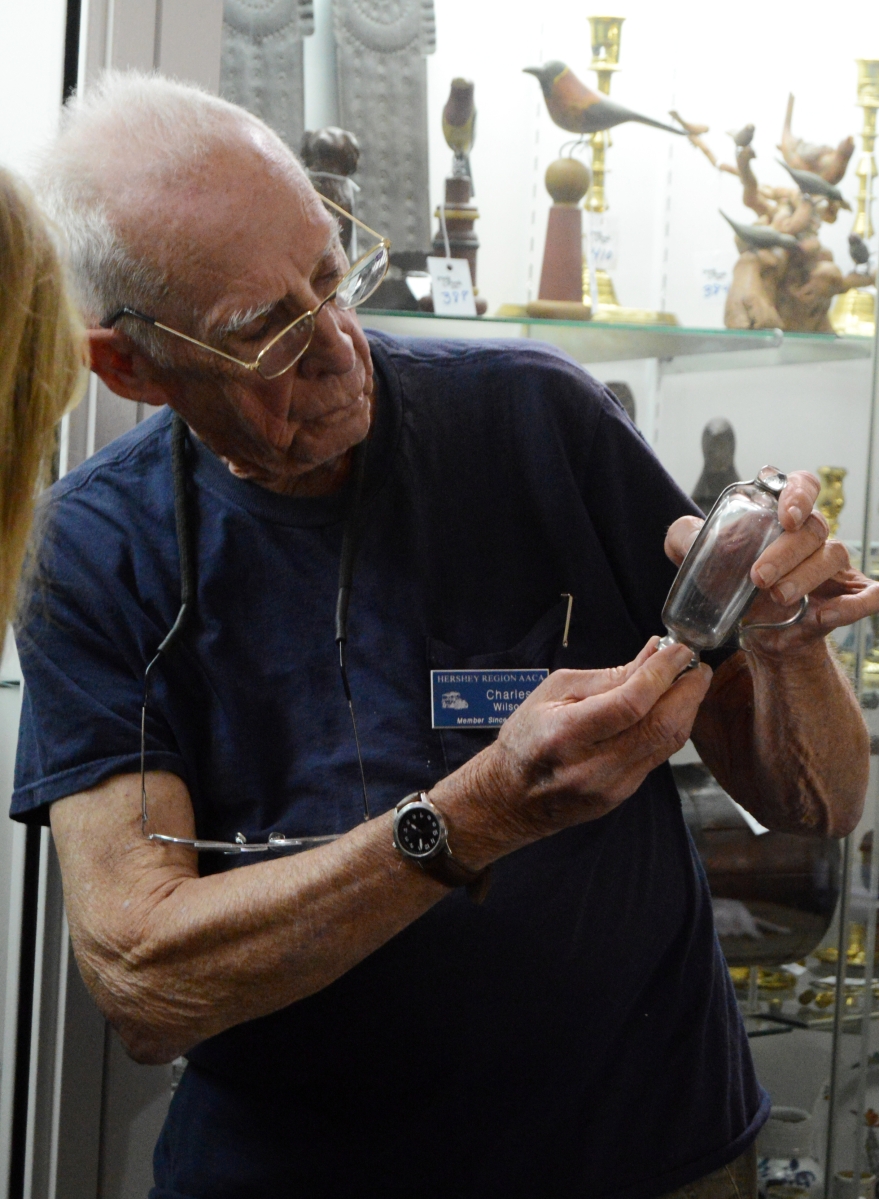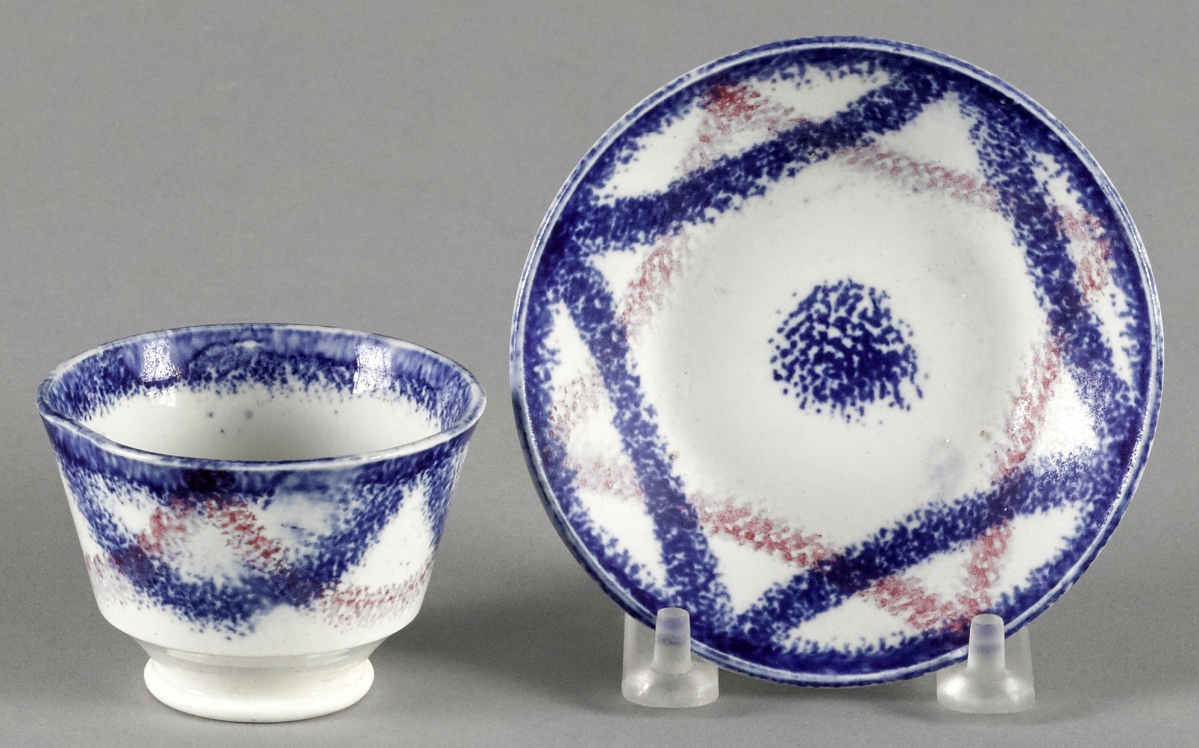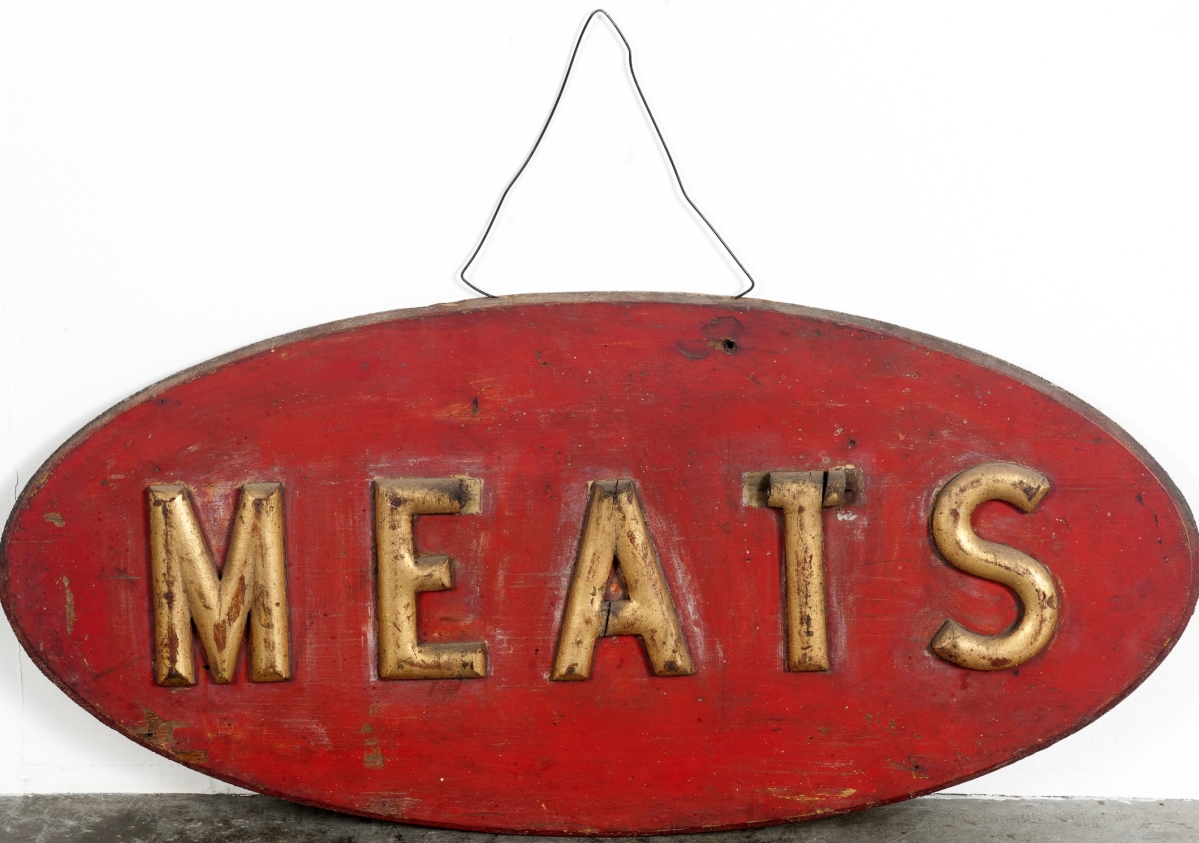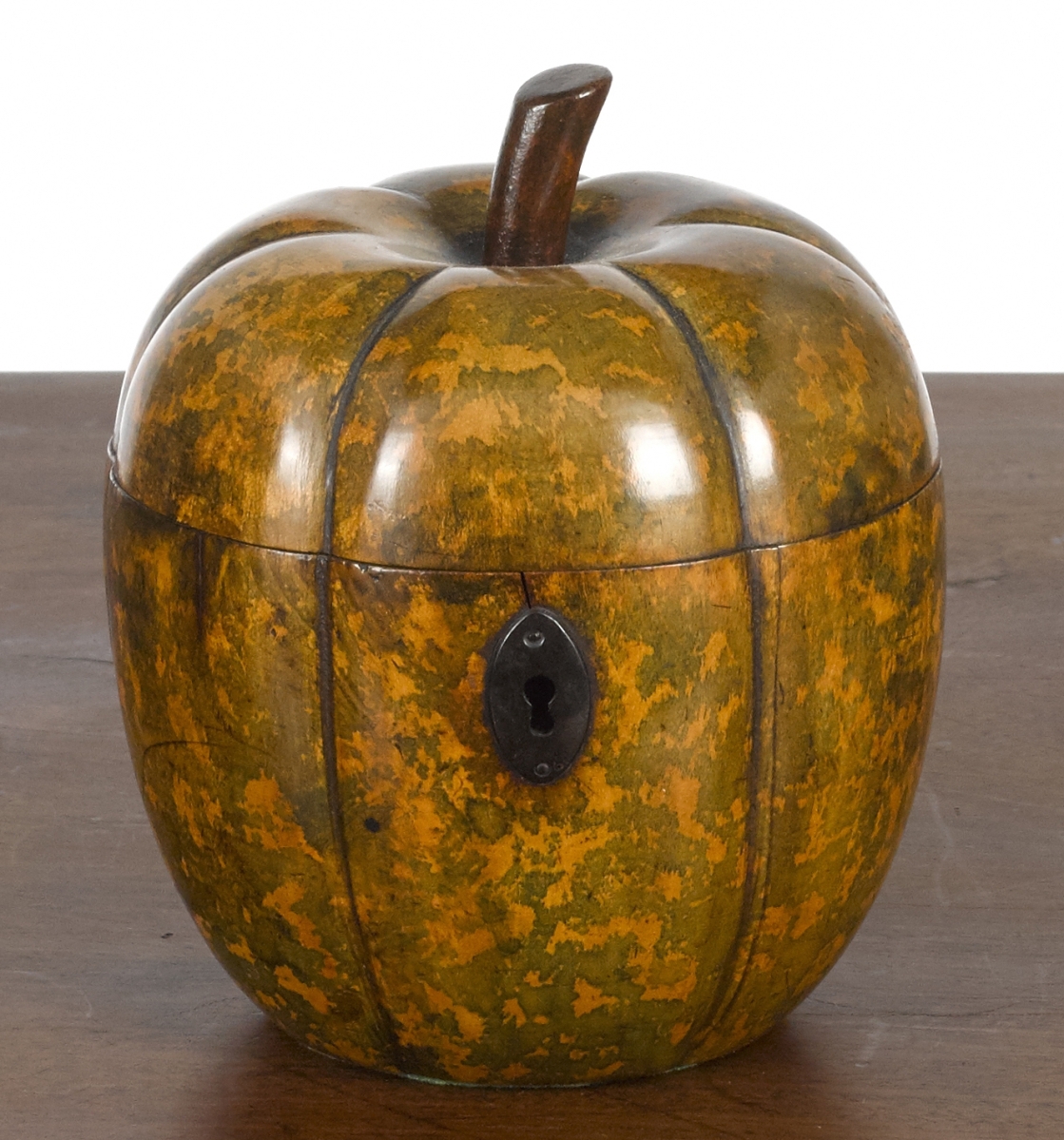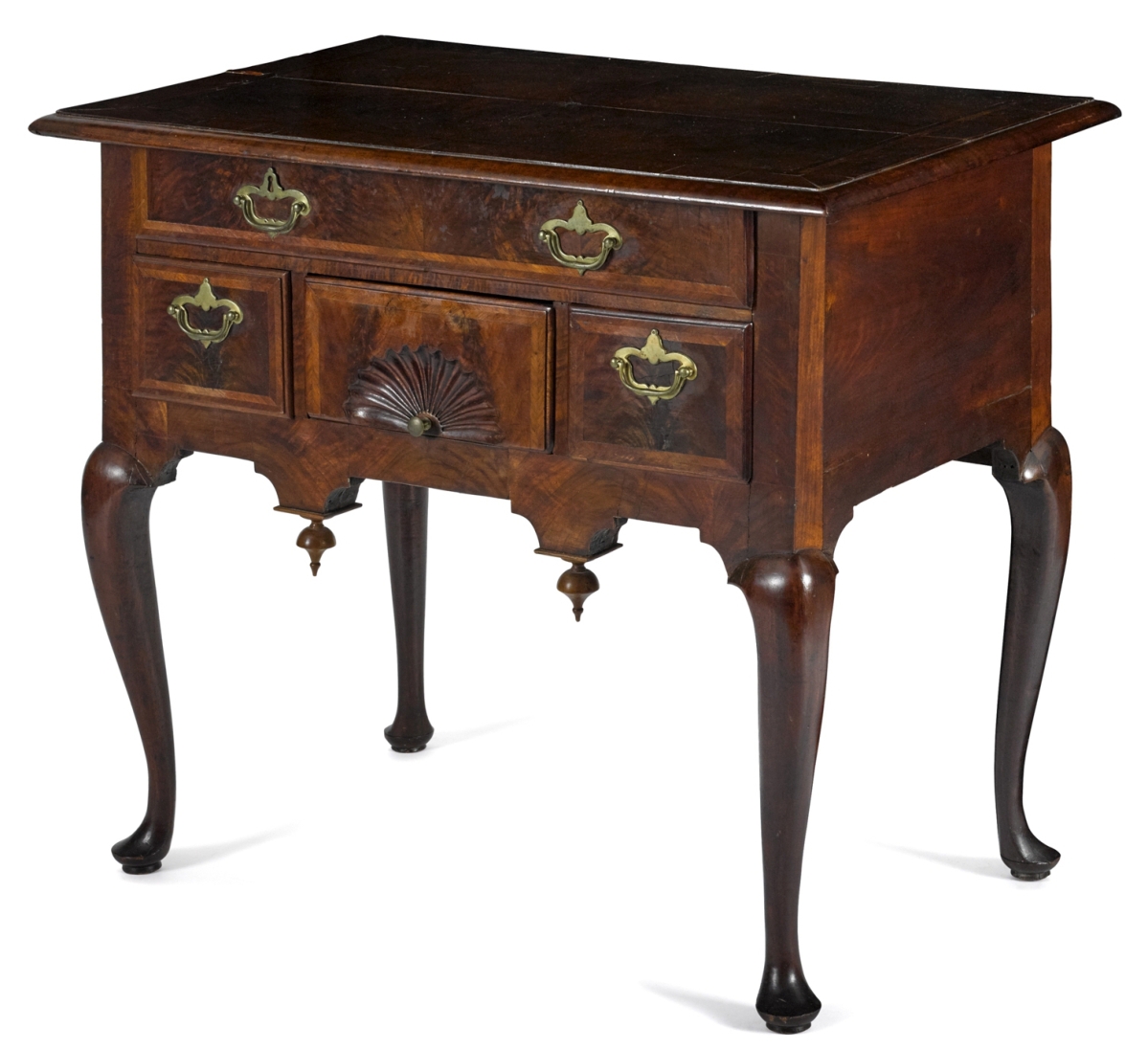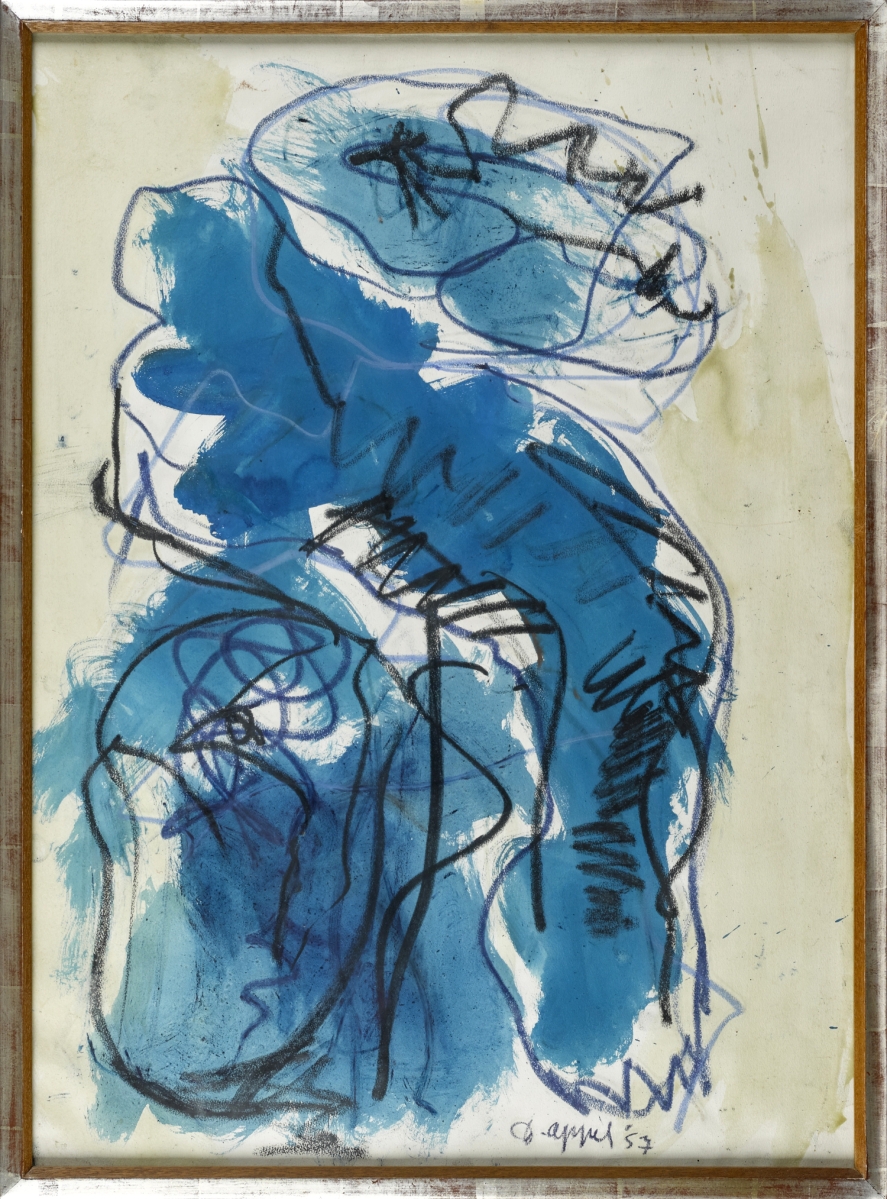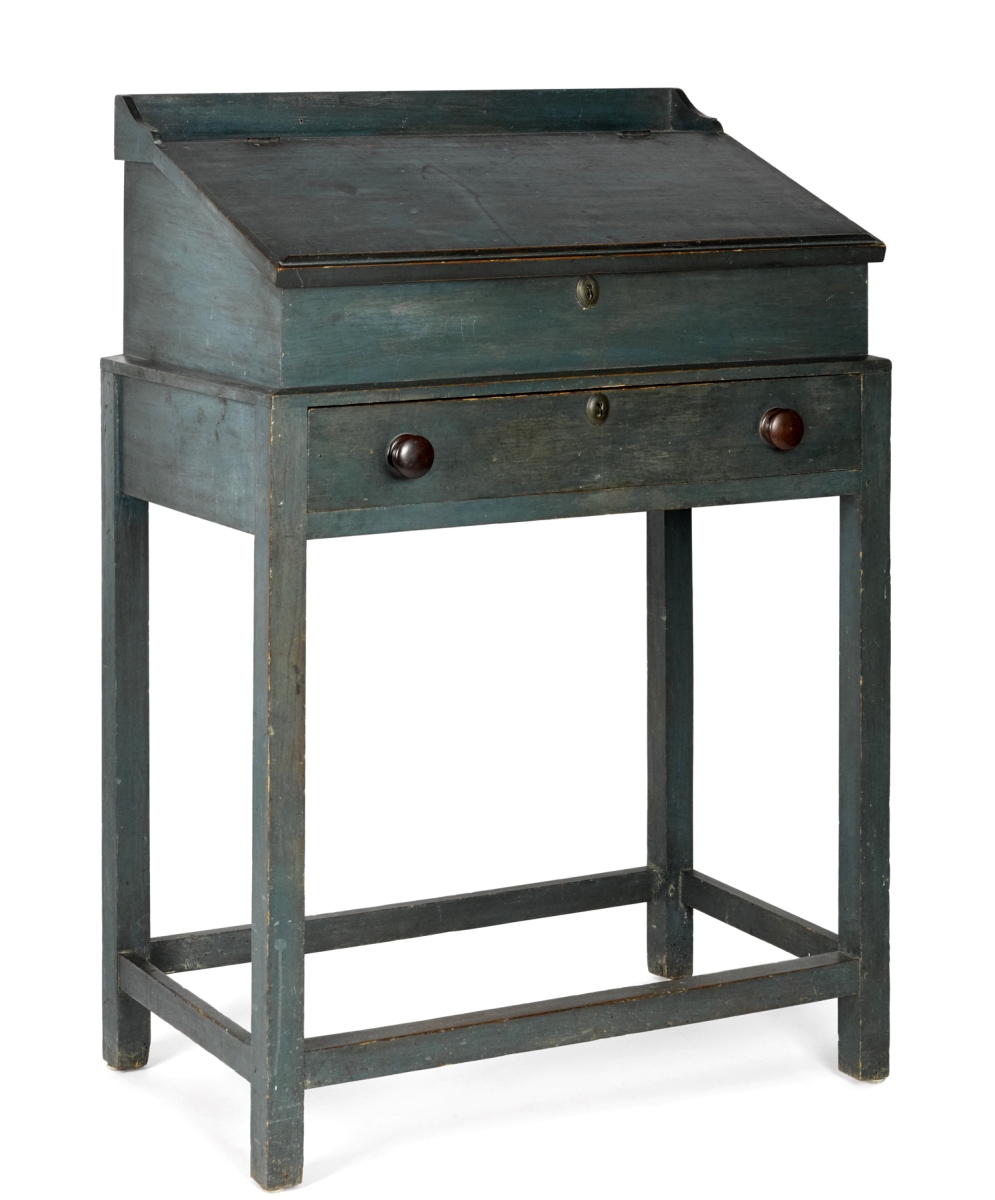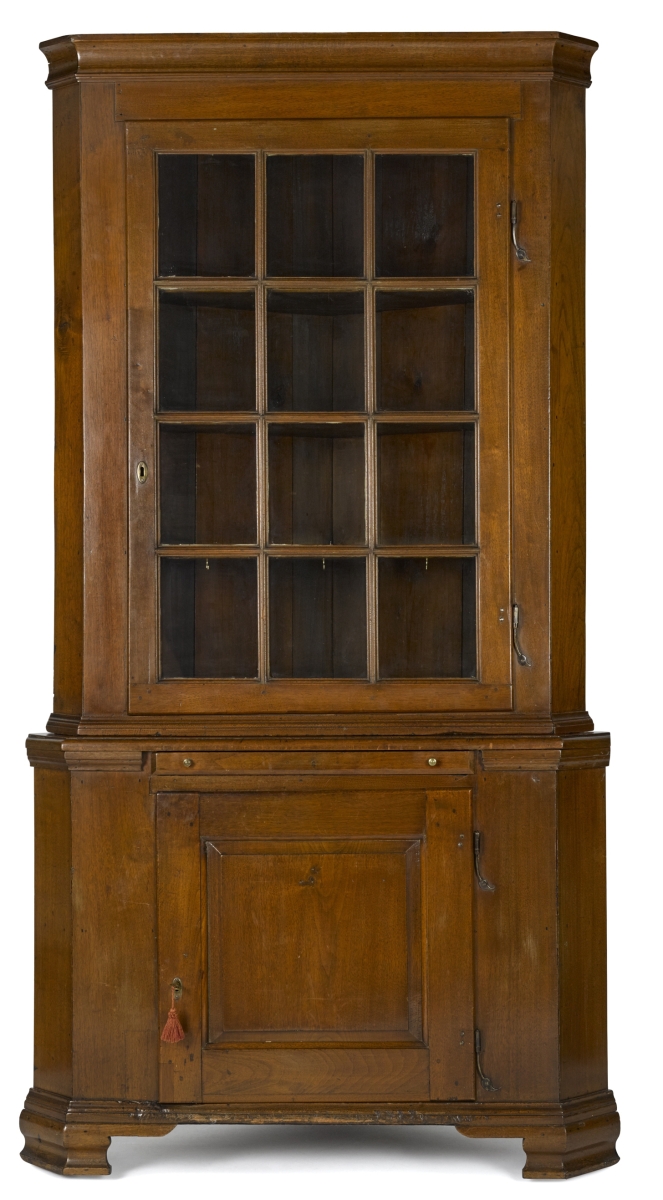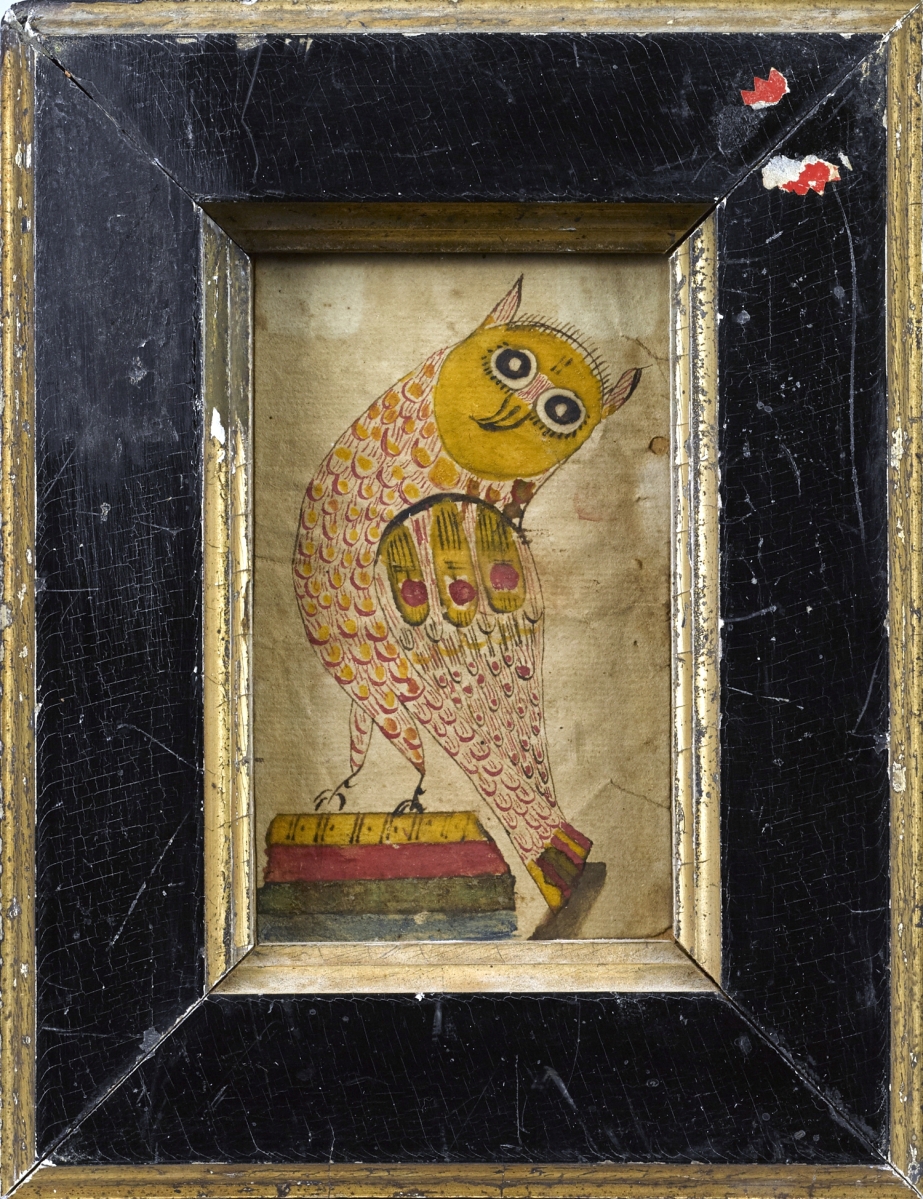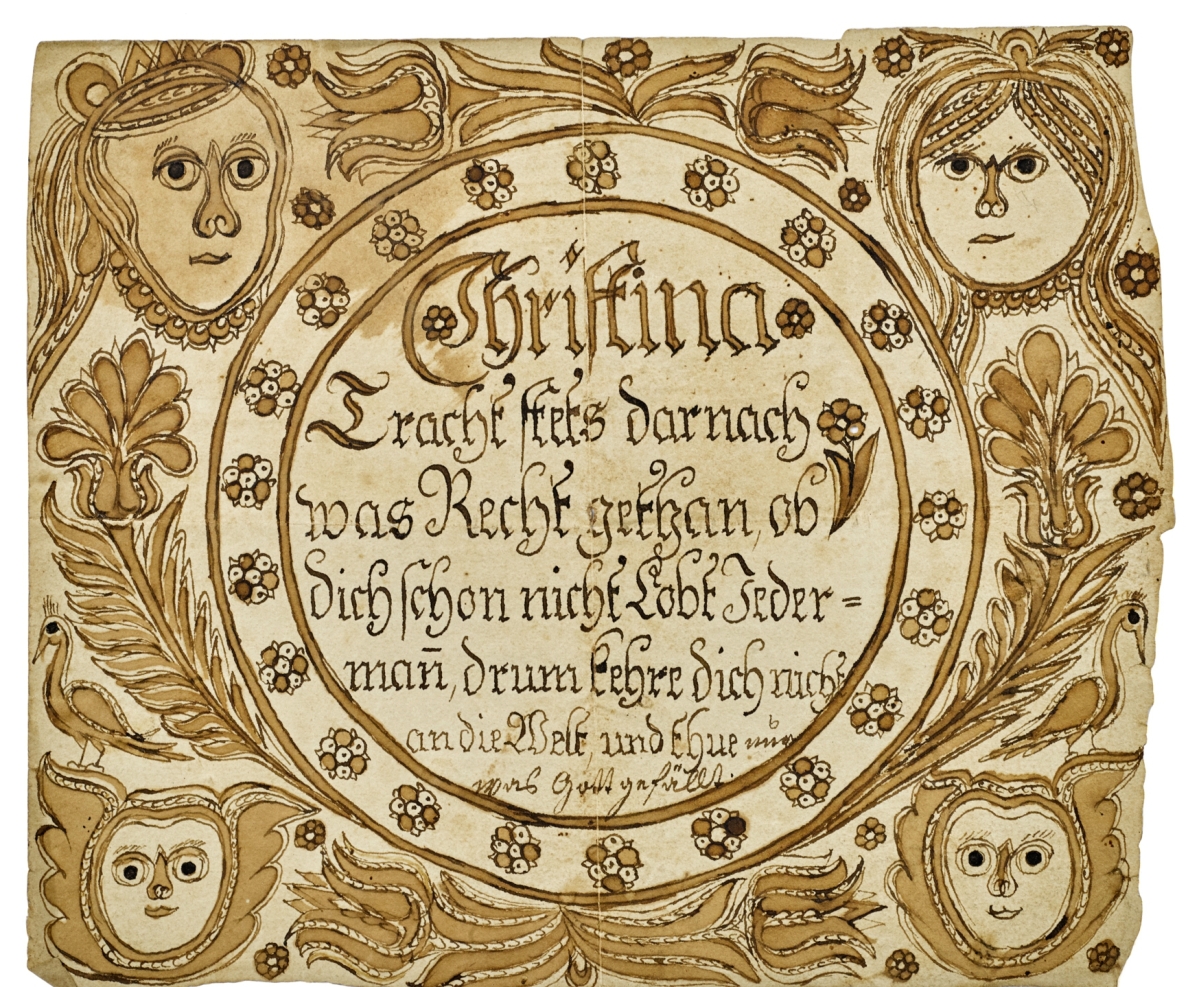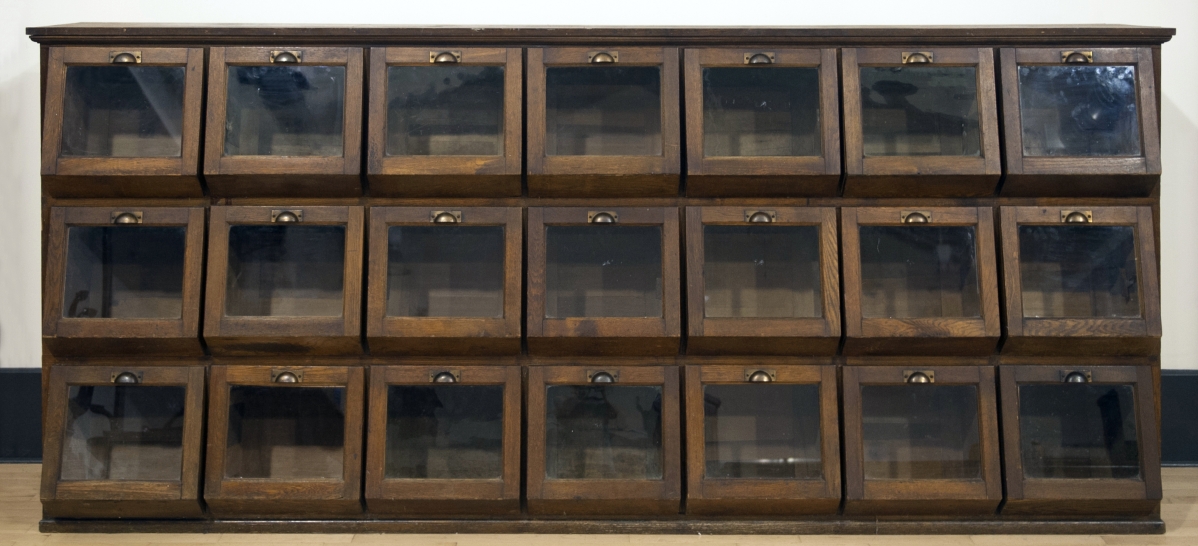
Company vice presidents Deirdre Pook Magarelli, James Pook and Jamie Shearer stand under the podium, flanking the Lancaster County dower chest that would go on to become the sale’s top lot at $108,000.
Review and Onsite Photos by Andrea Valluzzo, Additional Photos Courtesy Pook & Pook Auctions
DOWNINGTOWN, PENN. — While a rare Lancaster County dower chest with tulip decoration was the headline performer at Pook & Pook’s three-session Americana auction October 7–10 at $108,000, bidders also had a hankering for the blues as several examples of blue painted furniture found favor across the block, performing well above estimate in most cases. Friday and Saturday’s live sessions totaled $1.3 million, with another $180,000 coming from an online-only session on October 10.
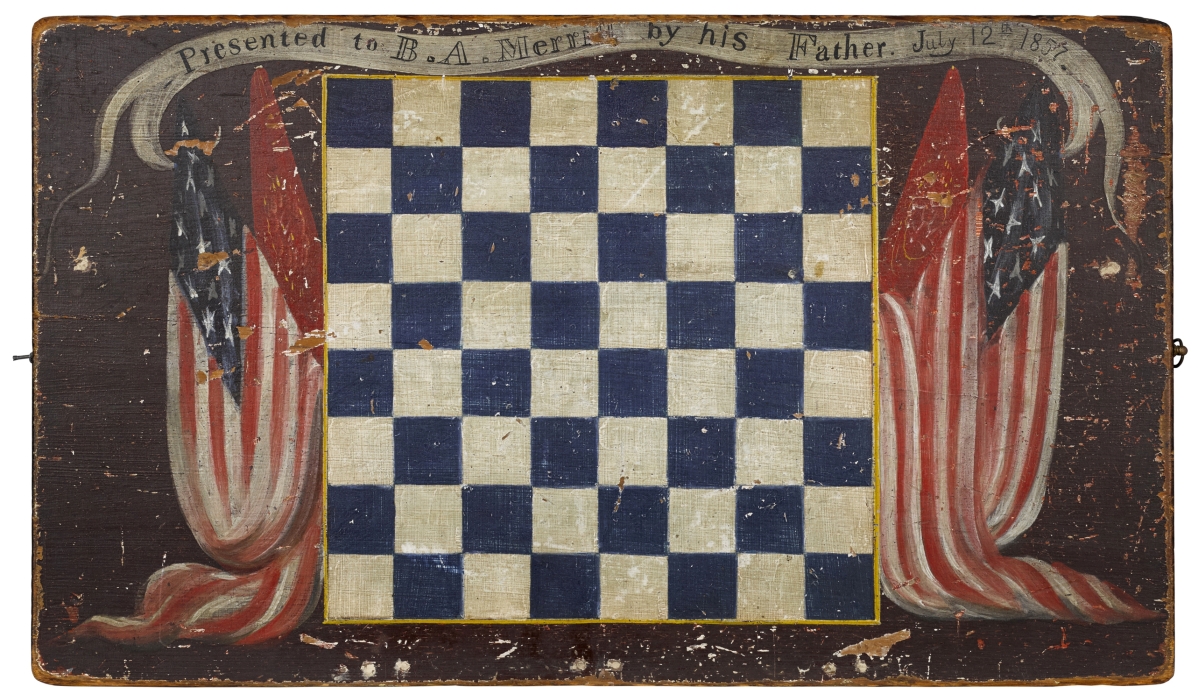
Selling to a phone bidder was this New England painted pine sailor’s game board, inscribed “Presented to B.A. Merrill by his Father” that handily bested its estimate to bring $48,000.
After kicking off the Americana sales Friday night with traditional furniture, spatter and fine art, Saturday’s 578-lot session led off with a Connecticut painted pine schoolmaster’s desk that retained its original blue surface in pristine condition ($2/3,000). The Nineteenth Century piece with provenance to veteran dealer Lew Scranton sold for $7,800. It came out of the Dianne Goldman Collection, Fairfield, Conn., of Americana and folk art. Many of the pieces offered in the sale from her collection were acquired during countless trips to Pennsylvania over her 40 years of collecting, particularly Berks and Lancaster Counties.
A mid-Atlantic painted pine, raised panel cupboard having an old scrubbed blue surface with eight ivory panels sold comfortably within estimate at $18,000, followed shortly by an important Shenandoah County, Va., painted hard pine sugar chest, Nineteenth Century ($6/10,000) that made $15,600. The latter piece, retaining a bright blue surface, is inscribed “James C. Foltz Lantz Mill Shenandoah CV” on the underside of the lid. Foltz ran a distillery in the small village of Lantz Roller Mill.
A rare Berks County painted walnut stretcher base tavern table that kept a fine and old blue painted surface, circa 1760, sold just over high estimate at $16,800.
Late in the day Saturday, a Pennsylvania painted hard pine Dutch cupboard, early Nineteenth Century, purportedly Mahantongo area, crossed the block. The piece, which attracted much attention during the sale as it was prominently displayed in the Pook’s foyer during preview and the auction, fetched $10,200, more than doubling its low estimate. The piece had elaborately reeded pilasters, lower doors and star carved drawers and stood 81½ inches tall.
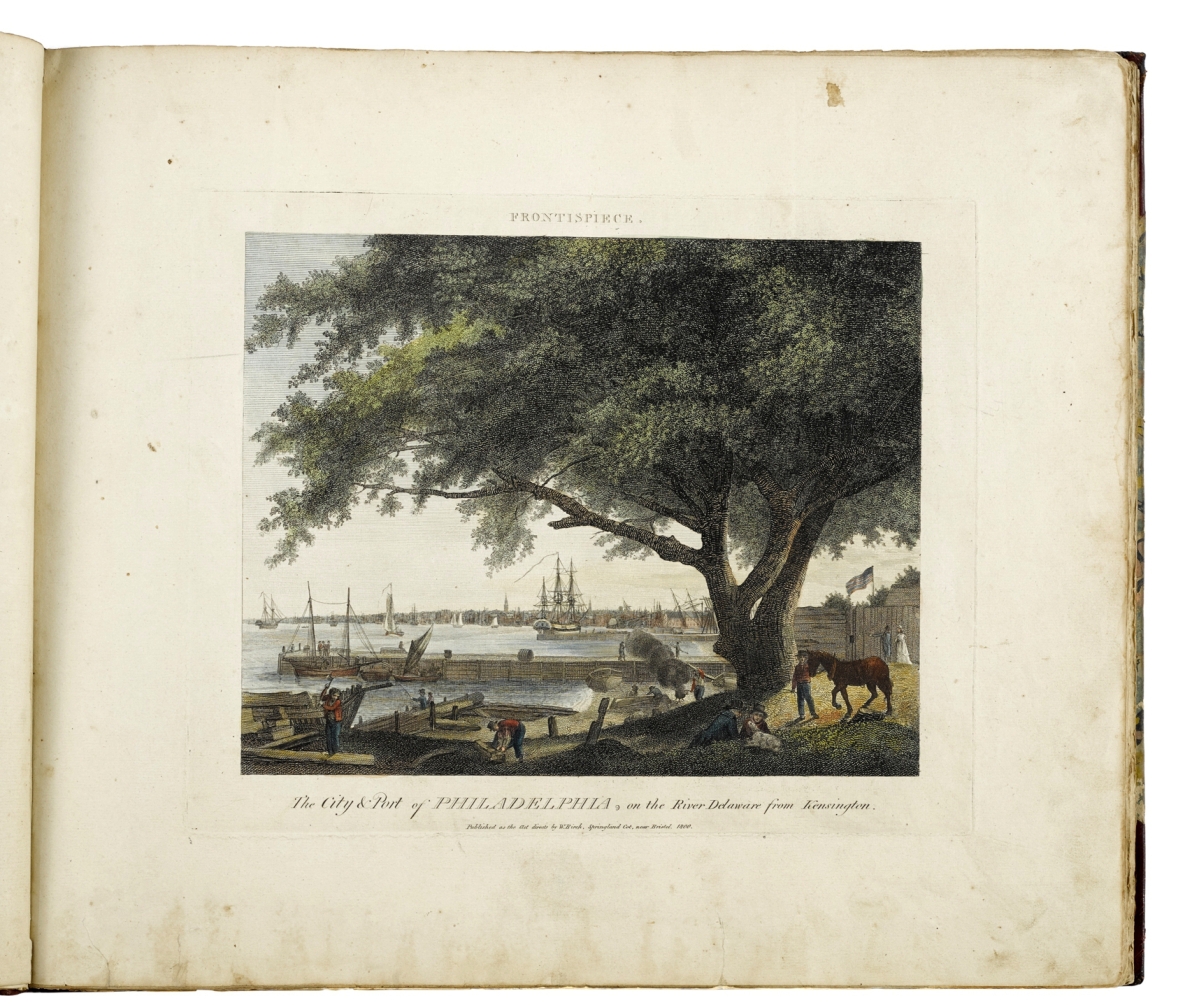
William Birch’s The City of Philadelphia in the State of Pennsylvania North America… earned $24,000. Few extant copies of this book remain in private hands.
“Blue painted furniture was popular across all sizes and forms,” noted vice president Deirdre Pook Magarelli after the sale. “Overall we were very happy with the results of the auctions. There were some surprises and a few disappointments, but overall it was a fun auction with a ‘something for everyone’ feel.”
Another “blues” standout was a Pennsylvania German dower chest, pine, dated 1786, having overall blue sponged decoration surrounding ivory panels of pots of flowers on the front and side panels with rampant lions, that finished above estimate at $19,200. The piece had provenance to well-known antiques dealers James and Nancy Glazer.
Of course, the featured chest in the sale though was the aforementioned and lavishly decorated Lancaster County, Penn., dower chest that brought $108,000. Antiques dealer and show manager Diana Bittel was the winning bidder, beating out competition from a phone bidder to acquire it for a young collector in Texas.
The 1795 chest was illustrated in Monroe Fabian’s The Pennsylvania-German Decorated Chest, with the author noting, “This is the latest dated architectural chest recorded.” Formerly owned by pioneer collector George Horace Lorimer, the chest went to Sandy and Julie Palley, from whose collection it was sold at Sotheby’s in January 2002 for $170,750.
Bittel noted the chest had great provenance and was rare. “The Palleys had a great eye and great stuff. You’re not seeing a whole lot of great [chests like this] come across the market.”
Bittel continued to buy for herself and her client throughout the sale, including a nice pair of painted cast iron Indian chief andirons, late Nineteenth Century, having an early polychrome surface, at $9,000. “I got some great things and had a very good time,” she said after the sale. “There were a lot of good opportunities here, it’s a buyers market. It’s an opportunistic time to buy and pass it [savings] on to the client.”
Friday
Friday’s 269-lot session started off well with lot 1, a nice Southern painted hard pine pie safe, early Nineteenth Century, with punched tin panels with tulip, philphlot and star designs ($2/$4,000) that made $6,600. It drew a full phone bank also, with all six phones engaged. The piece came out of the estate of Shirley F. and Louis G. Hecht, Baltimore, Md., whose estate accounted for all but the last 61 lots of artwork in Friday’s session. The Hechts were passionate about family antiques.
Most items in this session, especially the smalls, went within estimates in the hundreds, but a few standouts emerged. One of them was an English painted fruitwood pumpkin-form tea caddy, early Nineteenth Century, 5 inches tall, that best its $300/400 estimate to go out at $5,166. The caddy was shortly followed by a Connecticut Chippendale cherry secretary desk, circa 1775, that nearly doubled its high estimate to bring $9,000 and a Boston Queen Anne burl walnut veneer dressing table, circa 1760, with a shell carved drawer sold above high estimate for $11,400.
A grouping of miniature spatterware held some nice surprises: a blue and purple rainbow spatter cup and saucer surpassed its $200/400 estimate to bring $2,040, and a blue spatter cup and saucer with yellow tulip decoration ($200/400) led the pack at $3,120. Later highlights among full-size spatter included an unusual red, green and blue sponge spatter covered sugar with decoration of a fort, Nineteenth Century, that quintupled its high estimate to fetch $3,120 and a blue spatter pitcher with schoolhouse decoration, 9-3/8 inches tall, at $3,600.
“Quite surprising was being on the phone so much for the spatter. Spatter has taken a hit recently in price and popularity, but what we saw during this auction was a surprising amount of interest still out there with many of the pieces going well above estimate,” Deirdre said. “The same was true for the Gaudy Welsh sold on Monday; again I was quite surprised to see the entire collection come in above the projected high estimate.”
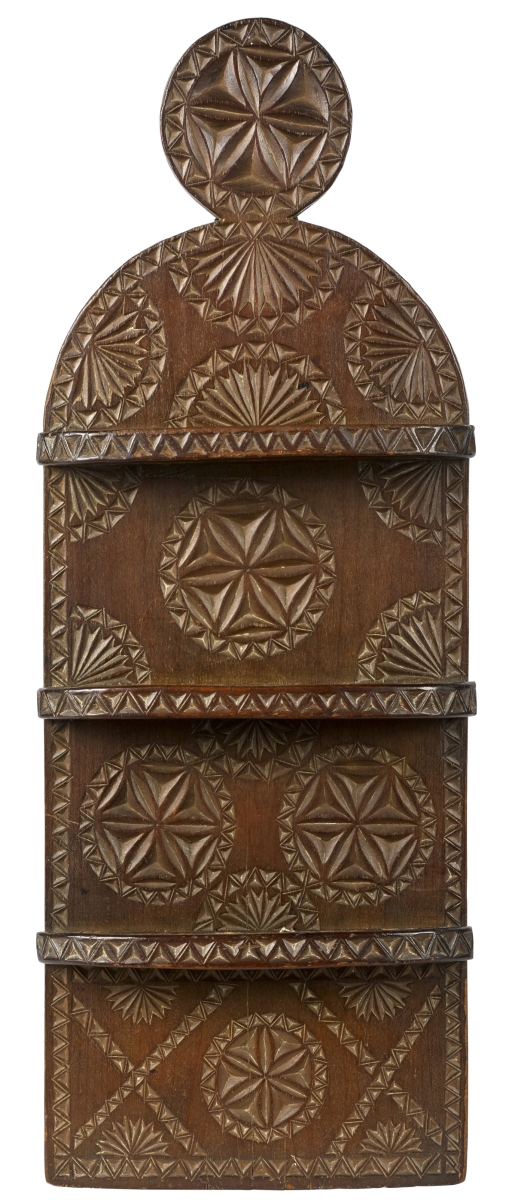
A New Jersey or New York carved cherry spoon rack, late Eighteenth Century, with chip carved pinwheel decoration, doubled high estimate to bring $16,800.
A nice selection of works by Carl Snavely (Lancaster, Penn., 1915–1983) was led by a carved and painted spread-winged eagle, 7 by 20 inches, that more than doubled high estimate to achieve $2,640.
Some 200 lots into the sale, the focus moved from ceramics to fine art. The Hechts had a nice collection of works, mostly American artists like Birger Sandzen, Emile Gruppe, Lebbeus Woods and Antonio Martino.
Highlights include a Karel Appel (Dutch American 1921–2006) mixed media abstract blue figure with black lines, signed ($4/7,000) that fetched $15,600 and a Thomas Birch oil on canvas winter landscape going above estimate for $9,225. A buyer got a good buy on a Daniel Ridgway Knight oil on canvas portrait of a beggar and a small child selling just under estimate at $3,600.
Saturday
Besides the blue painted furniture discussed above, Saturday’s session of 578 lots featured several highlights from the collection of Sue and Frank Watkins, Richmond, Va., including an assembled set of nine Queen Anne painted rush seat dining chairs, Eighteenth Century ($1,5/2,500) going for $5,040 and a Pennsylvania walnut two-part corner cupboard, late Eighteenth Century, retaining its original rattail hinges ($2/4,000) $5,904. Also from their collection was a New Jersey or New York carved cherry spoon rack, late Eighteenth Century, with chip carved pinwheel and sawtooth decoration that doubled high estimate to earn $16,800.
A Philadelphia Chippendale mahogany dressing table, circa 1765, made $21,600, while a furniture category disappointment was the important New York William and Mary walnut tea table, dated 1731 ($50/60,000) that passed.
From the Dianne Goldman Collection came standouts like a rare American bone shaker bicycle, circa 1870, labeled by Wood Bros, Broadway, New York, 48 inches tall, that a buyer got for a reasonable $10,200 and a Snap Wyatt seven-part oil on canvas circus banner, of small size, for the Clarke Bros Circus ($2/3,000) at $8,400.
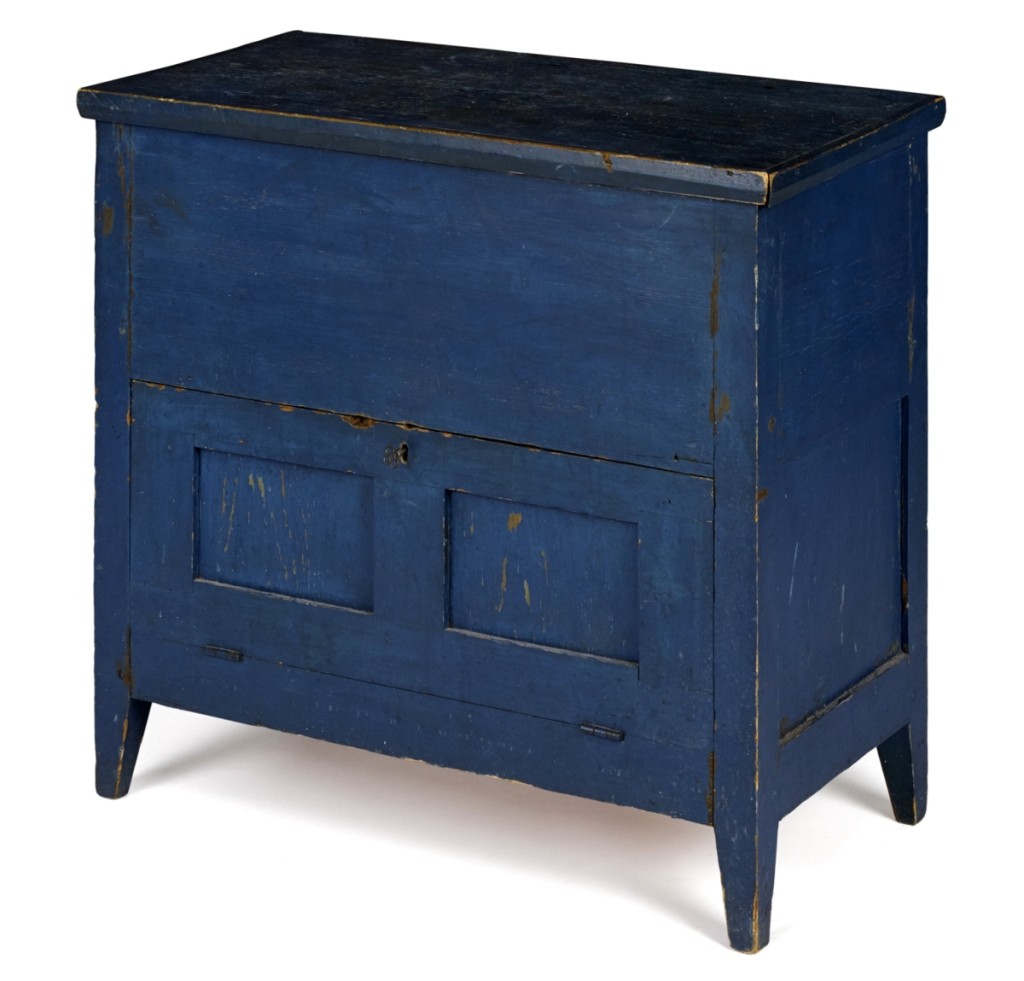
Another blue standout in the sale is this important Shenandoah County, Va., painted hard pine sugar chest, Nineteenth Century, that sold well above estimate at $15,600.
Other standouts included a New England painted pine sailor’s game board, inscribed “Presented to B.A. Merrill by his Father,” that handily bested its estimate to go to a phone bidder for $48,000, and William Birch’s The City of Philadelphia … in the year 1800, sold well above estimate at $24,000. Few extant copies of this book remain in private hands. The last public sale of a copy was at Pook & Pook in January 2011.
A Southeastern Pennsylvania ink and watercolor fraktur, early Nineteenth Century, of an owl ($2/4,000) earned $14,400. A similar example sold at the Ralph Esmerian sale at Sotheby’s in 2014.
Several choice examples of Nineteenth Century redware crossed the block, led by a Pennsylvania redware pie plate, Nineteenth Century, 7¾-inch diameter, attributed to Diehl pottery ($8/12,000) at $14,400. Two octagonal redware plates with provenance to Nancy and Thomas Tafur, Roxbury, Conn., and illustrated in David Schorsch’s book The Barry Cohen Collection, also performed well. First up was a 6-1/8-inch diameter plate with yellow slip dot in diamond decoration and green splashes, at $9,000, followed by a plate with yellow slip and green splashes having a 6-inch diameter, $10,800.
Interviewed on the phone after the sale, antiques dealer David Schorsch said he did not buy the plates back, but talked of what made them so appealing. “What made them so rare was the size. They were miniature, the shape was unusual and they were in mint condition. Redware that small and precious and that mint is exceedingly rare … so that’s the reason the market said ‘We like this’.”
Monday
The auctions wrapped up Monday with an online-only sale featuring Barbara Hood’s Country Store in West Grove, Penn., and other additions.
Barbara and Richard Hood, who prefers to go by his nickname “Hoodie,” came out to the auction Friday and delighted in how Elizabeth “Beth” Pook had staged Barbara’s country store items in the auction gallery. The entire basement area, usually used for storage, was set up as a country store. Yarns and spools hung from a rack in the ceiling, fake food was set up in one showcase and an antique country sleigh had doll and stuffed animal passengers. Beth, a sister of company founder Ron Pook, has been setting up the auctions here for nearly a decade.
The Hoods collected antiques for 57 years and ran the store located behind their home for 35 years, but after Barbara underwent several back surgeries in 2012, they had to close the shop in 2013. “It was time,” Hoodie noted, while Barbara agreed, saying it was bittersweet though and that her customers had become like family.
The first lot across the block was a Thomas Cusack Co. painted pine country store “General Merchandise” sign, late Nineteenth Century, that was a good buy at $528. Highlights included a Virginia walnut canning cupboard, Nineteenth Century, with a shelved interior and cutout feet, 61 by 37 inches, at $836; and an oak country store seed counter, circa 1900, with 21 drawers and glass panes, 54 by 120 inches selling above estimate for $1,660. Another oak counter, circa 1900, with sunken panels and a turned top rail went well over estimate at $2,460.
“Monday’s auction was a hit. The country store material came in at almost the high estimate. We have just loved working with the Hoods, such a lovely couple,” Deirdre said.
All prices reported include the buyer’s premium.
For additional information, www.pookandpook.com or 610-269-4040.

